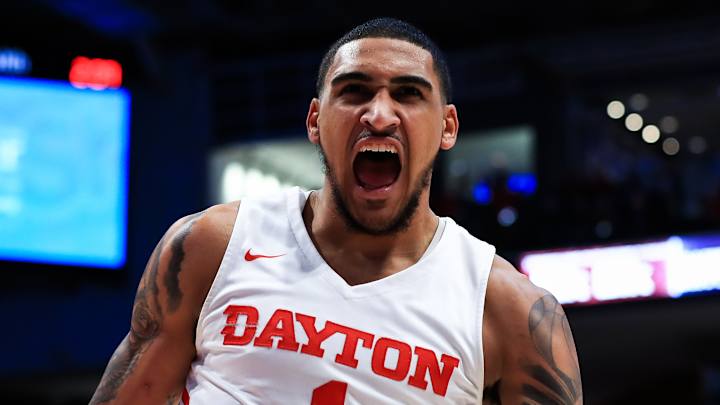College Basketball's Unorthodox Season Sets the Stage for a Wide-Open March

When the NCAA men’s basketball selection committee puts together the tournament bracket, will it rely on traditional stats, NET rankings, Ken Pomeroy’s system or a roulette wheel? And does it even matter?
This season up has been down, good has been bad and Stephen F. Austin has beaten Duke. The No. 1 ranking has been passed around like a microphone at a party of toddlers: Everybody wants it, but nobody knows what to do with it.
In the course of five games, Clemson lost to Yale at home, won at North Carolina for the first time in 60 tries and beat Duke. There are reports that North Carolina is actually not good, but Rutgers and Penn State are; we cannot confirm this until the smelling salts kick in. The sport’s last undefeated team was San Diego State, which was not even ranked in the preseason. Forget ranked—the Aztecs did not receive a single vote.
Kansas squeezed in a lot of really good basketball between a problematic performance by Snoop Dogg and a brawl with rival Kansas State. Evansville coach Walter McCarty produced the year’s feel-good and feel-bad stories in the span of weeks: First he beat his alma mater, Kentucky, and then he got fired for alleged sexual misconduct and violations of the university’s Title IX policy.
If, like a freshman in a 300-level class, you are wondering what the hell is happening here, start with this: The top-level talent in Division I is the worst of the modern era.
March Madness might not offer a glimpse of a single player who will go in the top eight of the NBA draft in June. Three stars are taking nontraditional routes from high school to the pros: point guard LaMelo Ball through Lithuania and Australia; point guard R.J. Hampton through New Zealand; and 7' 1" James Wiseman through his own predraft prep after withdrawing from Memphis in the heat of NCAA sanctions. Two more point guards—North Carolina’s Cole Anthony and Arizona’s Nico Mannion—play for traditional powers that aren’t great this year. Three other likely lottery picks—Georgia shooting guard Anthony Edwards, Iowa State combo guard Tyrese Haliburton (out for the season with a broken wrist) and Washington power forward Jaden McDaniels—play for teams that aren’t great most years (including this one).

And then there is Dayton’s Obi Toppin who might be the first player in the NCAA tournament to get drafted. In a way, the 6'9" forward is an embodiment of this season.
In an era of one-and-dones, Toppin entered as a one-and-none, academically ineligible as a freshman. But rather than see it as a year off, Flyers coach Anthony Grant says, “He was able to really buy into, ‘Hey, your games are practice. . . . Scout team or five-on-five, he looked forward to that. He took advantage of that year.”
Toppin was stronger, smarter and more skilled when he finally played in a game. Now he is a 220-pound redshirt sophomore with lottery buzz who does what many top prospects struggle to do: commit to making his teammates better by focusing on today.
It seems absurd to say Dayton (six NCAA tournament wins in the 2000s), San Diego State (six) or Seton Hall (four) is a good pick to win the national championship,
but it’s true. When the Flyers took Kansas to overtime in the Maui Invitational, Grant was not surprised. “We’ve got a chance every night,” he says. “Is that an indictment of the rest of college basketball? I hope not. We’ve got a good team.”
The underdog vibe provides a nice change from college football, where the same teams dominate every year. Even the major conferences don’t rule in hoops: The Big East is a match for any of them. A colossus before the defections of then-powerhouse teams in the early 2010s, it is now full of programs with solid foundations—Villanova, Butler, Marquette, Creighton—that build methodically.
“Our coaches would love to recruit a large number of one-and-done players,” says the Big East’s executive associate commissioner for men’s basketball, Stu Jackson. “But the success of our conference since it’s been reconfigured has been built on the backs of player development over the course of three or four years, with the eye on becoming a true team.”
Most of the best Big East teams have depth and a star point guard. Seton Hall’s Myles Powell, Marquette’s Markus Howard and Butler’s Kamar Baldwin are all seniors. Villanova, which won two of the last five national titles, is younger, but coach Jay Wright develops talent as well as anybody.
What we don’t know is whether all this represents the state of the sport going forward or an aberration. Jackson says elite players going overseas or skipping college is “not an epidemic, so I don’t want to overstate this.” But you can expect more of it, and “that has siphoned off—and I think this will be a trend—some of these top, top players.”
We are only two years removed from a veteran Villanova team blowing everybody away en route to the title, and one year from Zion Williamson being a phenomenon at Duke.
And speaking of the Blue Devils: Led by freshman center Vernon Carey Jr., they are in the mix again. For four decades Mike Krzyzewski’s teams have understood that the season is short and every day is precious. Another Duke championship would be an oddly fitting end to what has been a wild, upset-filled season: Just when we figure we have no idea what’s coming, we get the most predictable outcome of all.
This story appears in the March 2020 issue of Sports Illustrated. To subscribe, click here.
